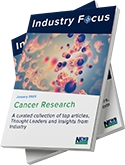If your doctors and hospital aren't breathlessly following this for stroke intervention, you don't have a functioning stroke doctor or hospital. Until this is available what is your doctor doing to increase the oxygen supply to the brain?
Here, check these out.
cerebral blood flow (29 posts to July 2016)
Cerebral blood flow autoregulation (1 post to July 2021)
Cerebral Blood Flow Velocity (1 post to Febraury 2020)
cortical oxygenation (1 post to November 2020)
oxygen delivery (20 posts to January 2020)
oxygen uptake (5 posts to August 2013)
Super Saturated Oxygen Therapy (1 post to May 2021)
Normobaric oxygen (10 posts to January 2020)
brain blood flow (3 posts to April 2019)
The latest here:
Landmark discovery provides a new perspective on tissue oxygenation
Cardiovascular medicine, hematology and pulmonary medicine may soon have the first-ever therapies to correct poor tissue oxygenation, a key driver of disease in millions, including peripheral artery disease, sickle cell disease, heart failure, stroke, emphysema and many others.
The breakthrough follows a landmark discovery from investigators at Harrington Discovery Institute at University Hospitals (UH) and Case Western Reserve University School of Medicine. The research team showed that a modified version of hemoglobin, termed S-nitrosohemoglobin, senses areas with insufficient oxygen, and then restores blood flow for oxygenation. The study recently published in PNAS.
Our textbooks focus on how much oxygen is carried in the blood. But this work reveals, for the first time in humans, that it's really not about oxygen, but about nitric oxide when it comes to delivering oxygen. Critically, the nitric oxide must be carried by hemoglobin, in the form of S-nitrosohemoglobin, to be effective. This opens up an entirely new line of drug development."
Jonathan S. Stamler, MD, senior author of the study, President, Harrington Discovery Institute at UH, Robert S. and Sylvia K. Reitman Family Foundation Distinguished Professor of Cardiovascular Innovation, and Professor of Medicine and Biochemistry at UH and Case Western Reserve School of Medicine
Correcting inadequate tissue oxygenation has been a longstanding goal of medicine. Scientists have known for some time that oxygen levels in the blood don't predict oxygen delivery to tissues, and that oxygen availability is almost never the problem.
"We have a major mystery in medicine," Dr. Stamler explained. "Even when people die from 'low oxygen' they still have lots of oxygen left in the bloodstream. Yet medications that increase blood flow are unable to increase oxygen delivery. There are millions of patients across both major and rare diseases that have disorders of oxygen delivery, and we have no way to improve that situation."
Drugs that improve blood flow have so far failed to improve oxygen delivery. So, increasing oxygen doesn't work and increasing blood flow hasn't worked.
In the new study, the researchers identify S-nitrosohemoglobin as a unique vasodilator that not only opens blood vessels but produces major increases in tissue oxygenation. Further, in both mice and humans--including patients with peripheral artery disease, sickle cell disease, heart failure, stroke and emphysema--impairments in tissue oxygenation were found to correlate with levels of S-nitrosohemoglobin. A low level resulted in poor tissue oxygenation.
"This study shows that you must vasodilate through hemoglobin if you want to get oxygen to tissues, because hemoglobin knows precisely where in the body oxygen is low, and then it adjusts itself to give off the vasodilator nitric oxide in proportion to need," Dr. Stamler said. "Other vasodilators dilate vessels everywhere, and steal blood flow from places that need it most."
Stamler and colleagues are currently working to develop drugs that modify hemoglobin with nitric oxide to form S-nitrosohemoglobin. These new drugs are increasing tissue oxygenation for the very first time, even when oxygen levels in the blood are low.
He emphasized, "It's almost never about amounts of oxygen in medical conditions. It's about blood flow in little blood vessels. If you don't have S-nitrosohemoglobin, you cannot oxygenate. This is an entirely new perspective on tissue oxygenation, and one that hopefully solves a major problem in medicine."
Reynolds, J.D., et al. (2023) Control of tissue oxygenation by S-nitrosohemoglobin in human subjects. PNAS. doi.org/10.1073/pnas.2220769120.

No comments:
Post a Comment